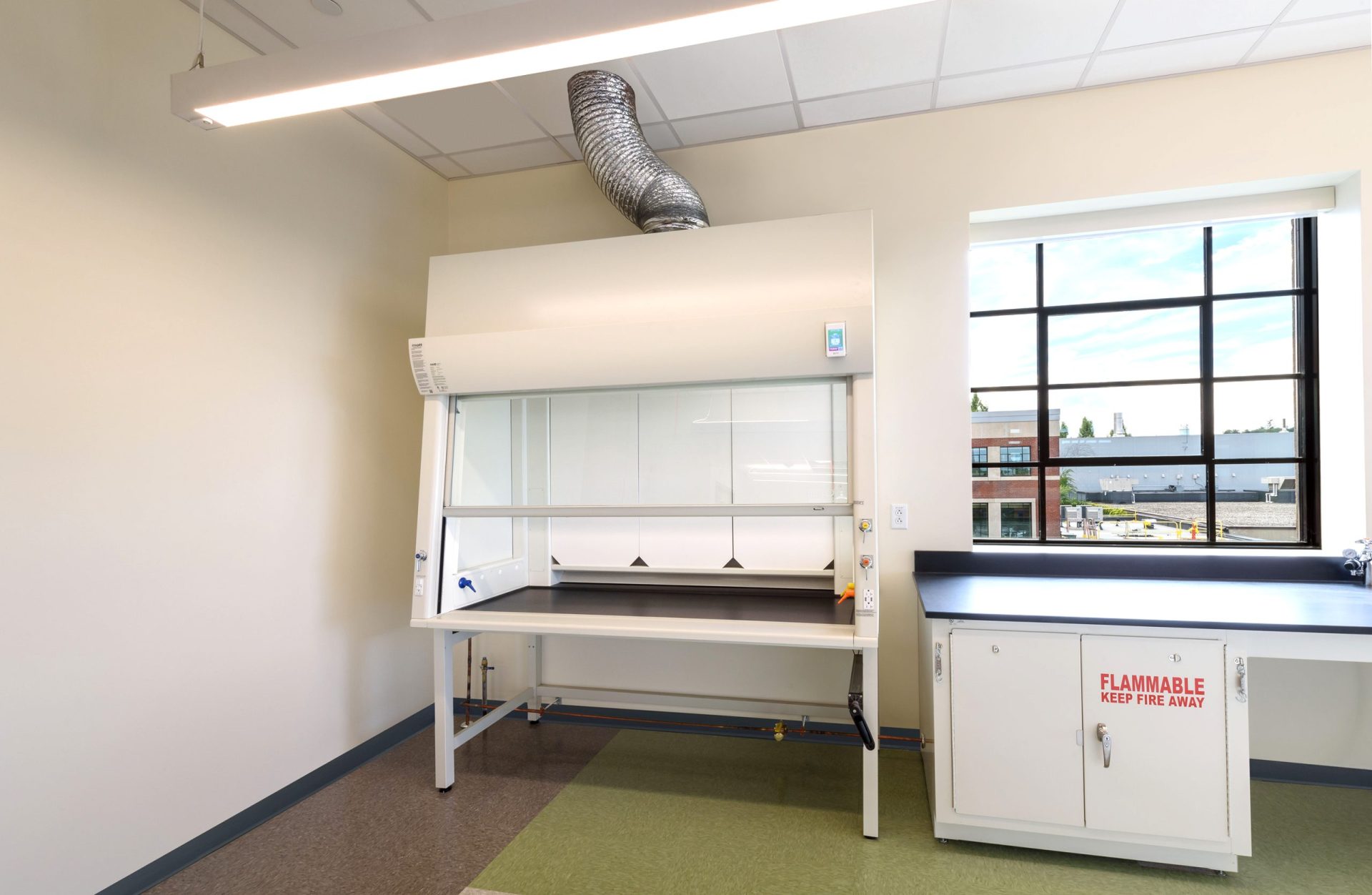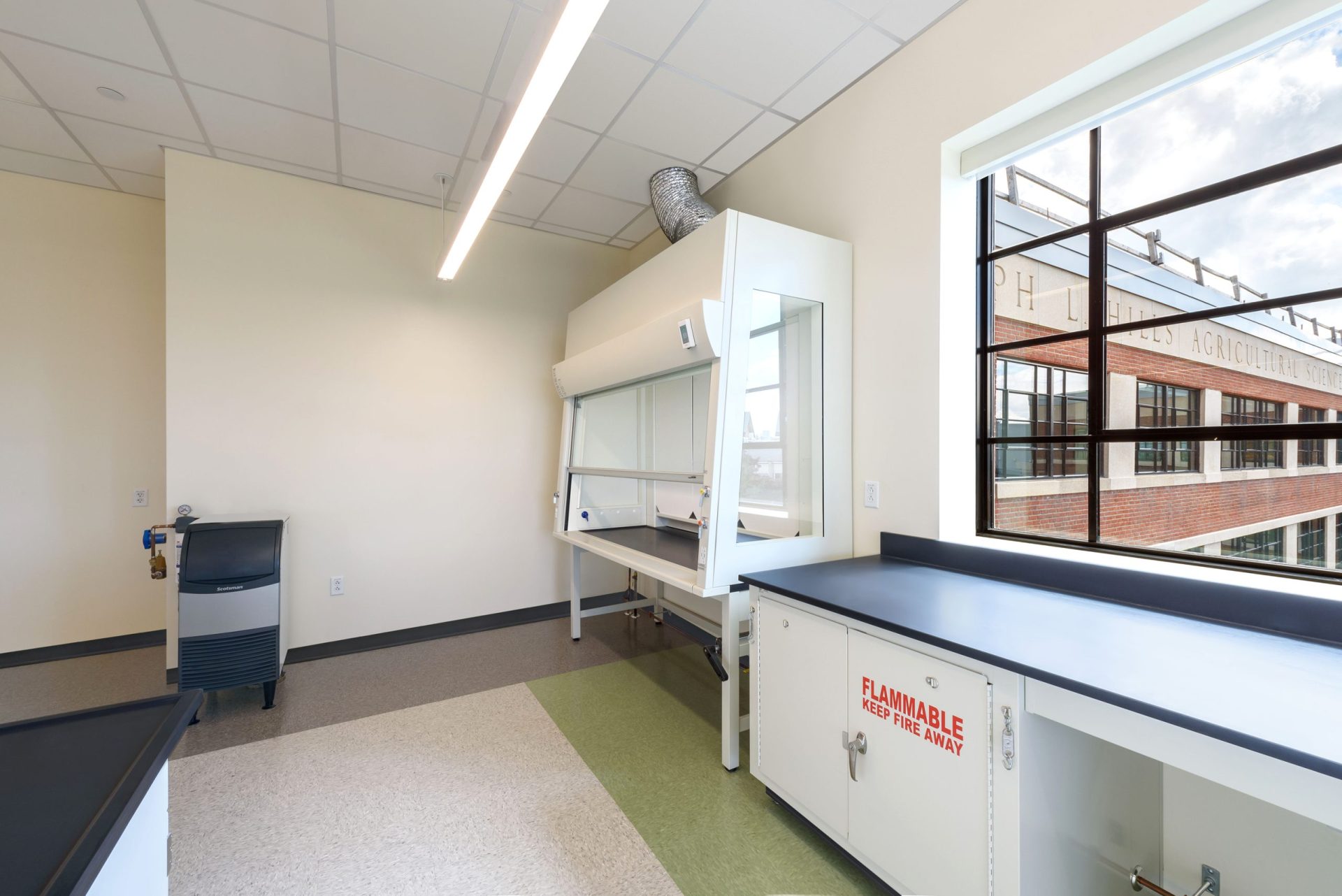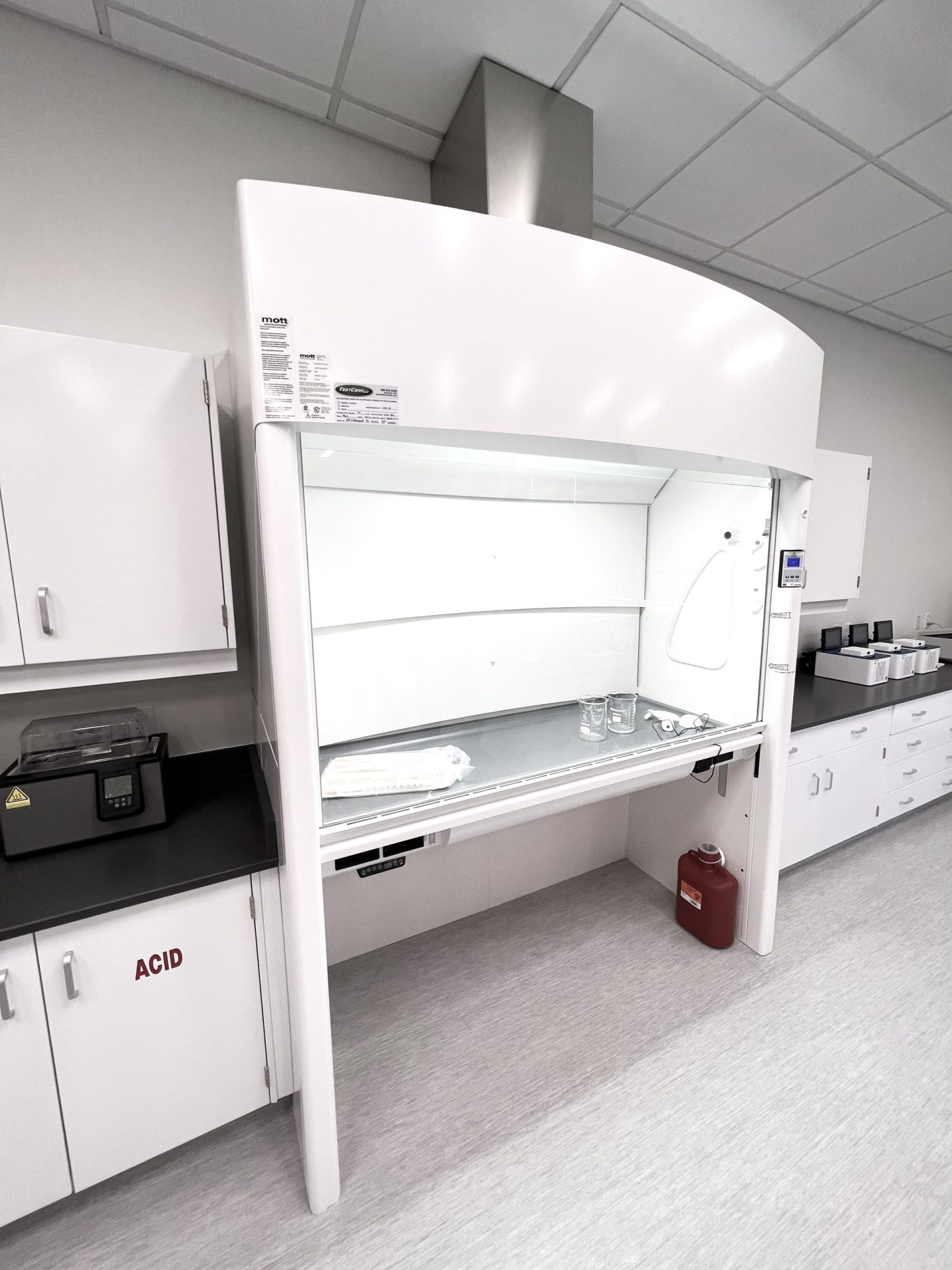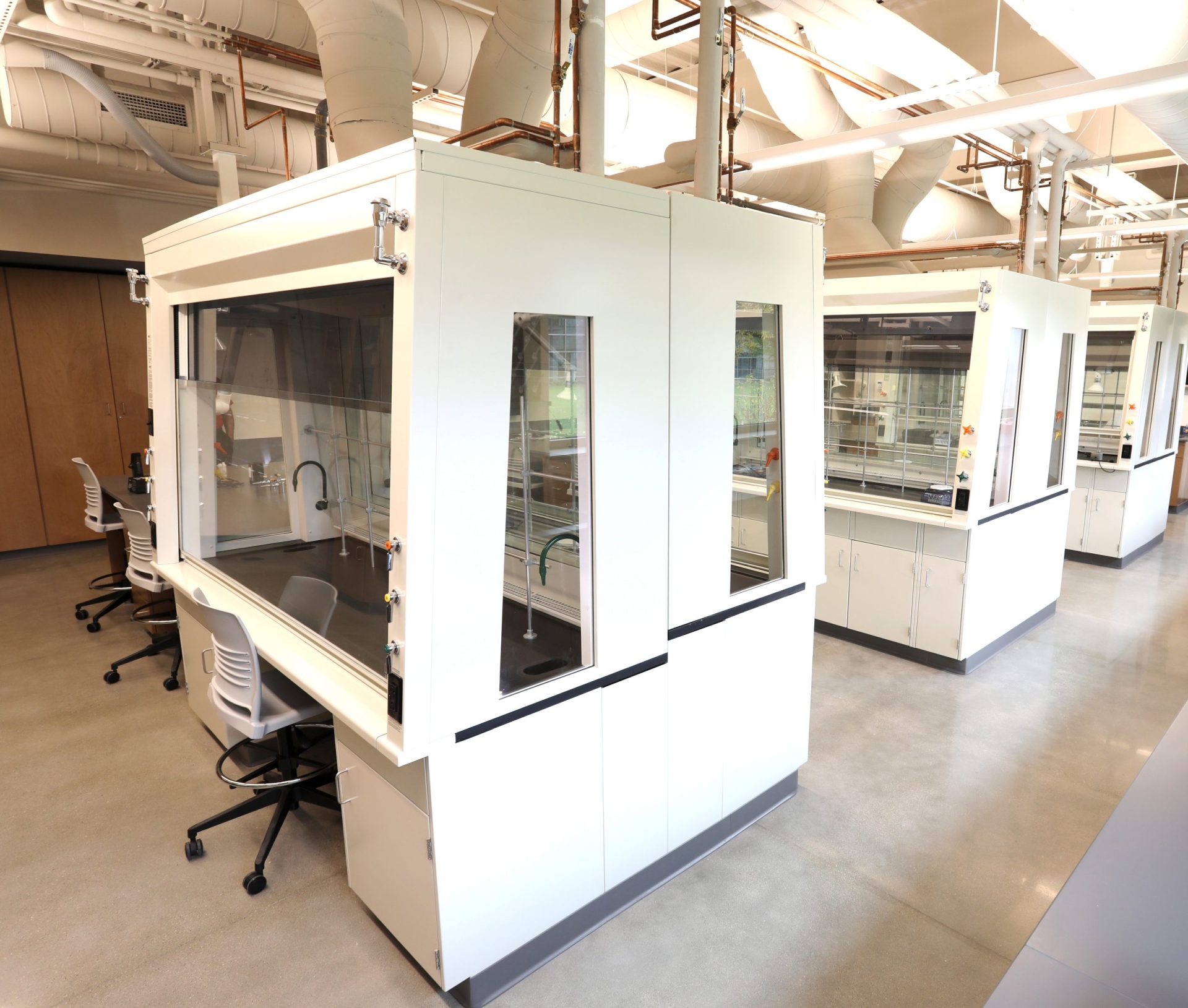As a lab planner, you are responsible for creating designs that meet your clients’ many needs while also complying with all building codes, industry standards, and best practices. Some of these requirements are non-negotiable, some exist in gray areas, and others stem from lessons learned through past designs and industry trends. Frustratingly, these requirements can sometimes be conflicting or competing.
Couple these challenges with the trend of utilizing shared resources to minimize costs and increase equipment utilization ratios, and you’ve got a real challenge on your hands! Yes, this is an achievable goal, and for some lab equipment it is fairly easily done. For chemical fume hoods, however, this becomes significantly more complicated.
Recently, I had the pleasure of engaging with Scott Kimble, the NYC Architecture Studio Leader at HDR. He shared insights into the challenges of designing shared fume hoods while ensuring compliance with ADA (Americans with Disabilities Act) requirements. His primary concern was:
“With so few fume hoods, centrally located and shared by many adjacent labs within a ‘reasonable’ distance, how can one dedicate a third or possibly half of them to fixed ADA work surface heights when the vast majority of hood users will find the ergonomics painful (i.e., the work surface is too low for standing work)?”
This is an excellent design challenge. While there are a few solutions available, only one provides the most flexibility, ensuring optimal utilization by all users while maximizing safety.
1. Fixed ADA-Compliant Fume Hoods
Installing fume hoods at fixed ADA-compliant heights ensures accessibility but comes with drawbacks when shared. These hoods, while necessary for some users, can be uncomfortable for the majority who need to work while standing. Without flexibility, they may end up as costly storage units if they are not regularly needed for ADA compliance. Often, these hoods become satellite waste stations or, worse, ventilated bookshelves.
2. Manually Adjustable Fume Hoods
Using fume hoods mounted on manually adjustable tables offers some flexibility but also introduces significant challenges:
- Flexible service hoses (for gases, water, vacuum, etc.) and flexible electric cords are commonly used in today’s labs. However, incorporating flexible exhaust ductwork poses serious risks:
- Chemical condensation hazards: Many procedures inside a fume hood generate, well, fumes! And these fumes can easily condense as the air cools leaving the hood. Condensation in flex duct is a hazard just waiting for a maintenance person! Whether the duct is vertical (best) horizontal (worse), or horizontal with a downward droop in the middle (worst!), there will be cavities in which contaminated condensation can and will accumulate over time. When that duct is disconnected for maintenance, the condensed chemical ‘soup’ can rain down on the maintenance person causing a hazard. Or, when the hood is lowered, straightening or stretching the flex duct, the condensation can rain down into the fume hood.
- Durability concerns: Flex duct may, over the years of chemical exposure and movement, start to break or crack. Now the condensation has a place to immediately go, without having to wait around for the facilities or demolition team.
- Increased operating costs: The exhaust airflow volume is always a concern and can directly contribute to operating costs (depending upon the lab’s fume hood density). Flex duct introduces more static pressure drop that the fan on the roof must then overcome. Thus, even a couple additional tenths of an inch water column (WC) of pressure drop can add to the fan’s consumption of electricity to exhaust the hood from the building, 24 hours per day, 7 days per week, 365 days per year. In essence, you get to pay for the flex duct year, after year, after year…


3. Electrically Adjustable Fume Hoods: The Best Solution
The most effective solution is a fume hood with an internally height-adjustable work surface. Enter Mott’s Optima™ fume hood, which offers:
- Instantaneous height adjustment from 30″ to 36″ above finished floor (AFF) with the push of a button.
- No need for flexible ductwork or service connections, eliminating concerns about safety and maintenance.
- Optional cup sink with a slip-fit, O-ring gasketed fitting for easy drainage.
- Optimized lab space utilization: Mobile storage or specialty cabinets can be placed under the hood when raised and removed for ADA access when needed.

Find the Right Solution for Your Lab
Navigating the complexities of shared fume hoods and ADA compliance doesn’t have to be overwhelming. Contact Mott today to discuss your unique challenges—we might have the perfect solution for your lab.
To learn more about the Optima™ fume hood, visit our page on: Optima™ Fume Hoods
Want to see more of what we’ve done? Check out our Optima™ Fume Hoods Photo Gallery to explore a wide variety of innovative designs. We’re always ready to take on new challenges, and we’d love to help bring your next vision to life.

